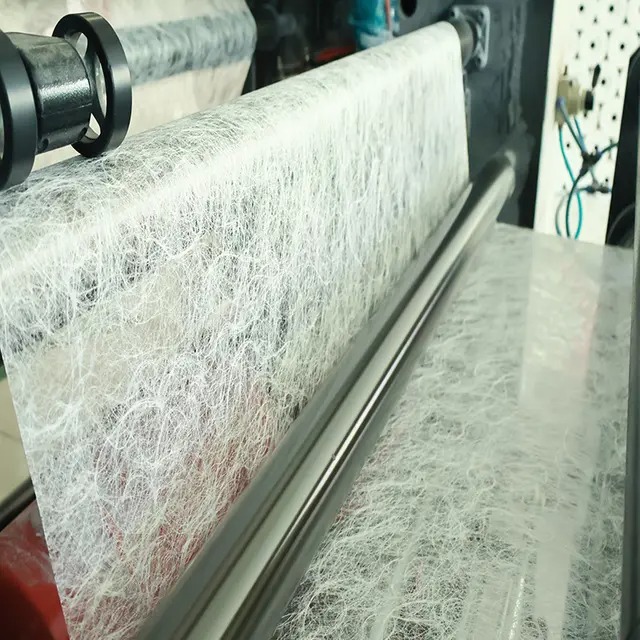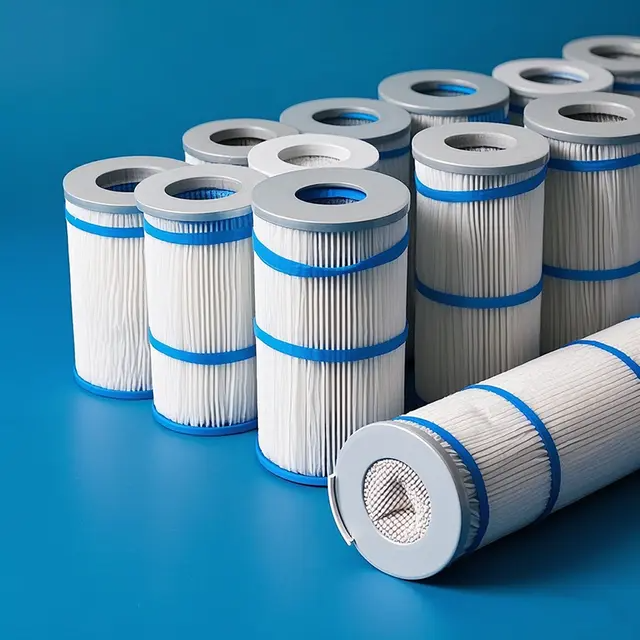- All
- Product Name
- Product Keyword
- Product Model
- Product Summary
- Product Description
- Multi Field Search

Views: 211 Author: Site Editor Publish Time: 2025-07-28 Origin: Site
In the world of modern construction and industrial materials, non-woven fabrics have made an undeniable impact. Among these, coarse filament non-woven fabric stands out due to its durability, high tensile strength, and versatility. One of the frequently asked questions surrounding this material is: Can coarse filament non-woven fabric be used in waterproofing applications? This article explores that question in depth, providing a comprehensive understanding of the material, its features, advantages, and the extent to which it can be effectively utilized in waterproofing, especially within the realms of building material, filter material, and decorative applications.
Coarse filament non-woven fabric is produced using coarse denier filaments, typically through a spunbond process. These filaments have a relatively high linear density (often more than 6 denier), resulting in a thicker, stronger material compared to fine filament alternatives.
This type of non-woven fabric exhibits a mesh-like texture, increased mechanical resistance, and enhanced dimensional stability. It is made without weaving or knitting but instead by bonding long fibers through mechanical, thermal, or chemical means. The outcome is a durable and porous sheet that finds applications across multiple industries, including civil engineering, construction, automotive, packaging, and environmental protection.
Coarse filament non-woven fabrics are favored for:
High tensile strength
Excellent chemical resistance
UV resistance
Thermal stability
Good water permeability (when not laminated)
These properties make it a candidate for semi-permeable or fully waterproof structures, depending on the treatment applied.

To answer the core question: Yes, coarse filament non-woven fabric can be used in waterproofing systems, but with important conditions and limitations. On its own, the material is not inherently waterproof, as it possesses micropores that allow air and some water vapor to pass through. However, when combined with other waterproofing agents or laminated with waterproof films, it can function as a highly effective waterproof barrier.
In construction, coarse filament non-woven fabrics are used as geotextiles, roof underlays, or foundation linings, where mechanical reinforcement and permeability are essential. To transform it into a waterproof layer, manufacturers often laminate it with polyethylene (PE) or polypropylene (PP) films or apply bitumen coatings. This creates a composite material that not only prevents water ingress but also maintains structural integrity under stress and temperature fluctuations.
It is particularly beneficial in:
Green roof systems
Underground waterproofing membranes
Concrete protection layers
Drainage composites
Thanks to its tensile strength and resistance to deformation, it withstands movement and pressure from soil or building shifts, thereby enhancing the longevity of the waterproofing system.
In the filter industry, coarse filament non-woven fabric plays a dual role. It allows the passage of air and liquid while capturing particles and resisting mechanical damage. This property has inspired its use in waterproofing projects where breathability and moisture control are critical—such as in ventilated facades or roofing membranes.
Waterproof breathable membranes often require a substrate that is both structurally sound and flexible. Coarse filament non-woven fabric meets these demands, especially when layered with breathable membranes. This pairing prevents liquid water from penetrating the surface while allowing trapped moisture or vapor from internal structures to escape, reducing the risk of mold and condensation.
Industries benefiting from this include:
HVAC and air filtration
Waterproof textile composites
Moisture-regulating wall claddings
The key to its success lies in multi-layer integration, where the non-woven base serves as a reinforcement and protection layer for the waterproof element above it.
When used correctly, coarse filament non-woven fabric provides several competitive advantages in waterproofing applications. Below is a breakdown in table form for clarity:
| Property | Description |
|---|---|
| Tensile Strength | Withstands structural stress, ideal for load-bearing applications |
| Durability | Long lifespan under exposure to chemicals, UV, and mechanical wear |
| Thermal Resistance | Maintains stability under varying temperatures |
| Compatibility with Laminates | Easily laminated with PE/PP films or coated with bitumen for waterproofing |
| Cost-Efficiency | More economical than woven geotextiles or membranes |
| Easy Installation | Lightweight and flexible, simplifying application in field conditions |
These features not only improve project performance but also reduce long-term maintenance and repair costs. Whether for commercial roofing or sub-grade waterproofing, coarse filament non-woven fabric brings efficiency and resilience.

While coarse filament non-woven fabrics have many benefits, certain limitations should be considered:
Not Naturally Waterproof
Without treatment, it may absorb moisture, depending on the pressure and exposure time. This limits its use in standalone waterproofing applications unless it’s paired with a sealing layer.
Breathability vs Waterproofing
If breathability is desired, adding a non-permeable waterproof film might interfere with air movement. This makes balancing performance crucial.
Chemical Compatibility
In some industrial environments, chemicals may degrade untreated polyester or polypropylene fibers. Proper coating or selection of resistant polymers is necessary.
Environmental Exposure
UV degradation over time can occur if the fabric is exposed directly to sunlight. Solutions include UV stabilizers or layering beneath protective materials.
For optimal results, application-specific customization is essential. Collaboration between material engineers and waterproofing experts ensures the material's full potential is realized.
No. It is naturally porous. To become waterproof, it needs to be laminated or coated.
Yes. When treated for waterproofing, it’s ideal for foundations and drainage protection.
Yes. Most versions are recyclable and chemically inert, posing minimal environmental risks.
This depends on the application. Generally, fabrics with 120gsm and above are preferred for strength and support.
Not alone. But it can be integrated into composite layers to enhance performance.
So, can coarse filament non-woven be used in waterproofing? Absolutely—when paired with the right technology. Its natural strengths in resilience, structure, and adaptability make it a vital player in modern waterproofing systems across industries such as construction, filtration, and decor. However, like any specialized material, it must be properly integrated, treated, or laminated to perform as a waterproofing component.
Its widespread availability, customization potential, and proven track record in performance applications position coarse filament non-woven fabric as a valuable material for sustainable and cost-effective waterproofing systems.
In the future, as new coating technologies and hybrid membranes evolve, we can expect even greater innovation and adoption of this durable non-woven fabric in waterproofing applications.